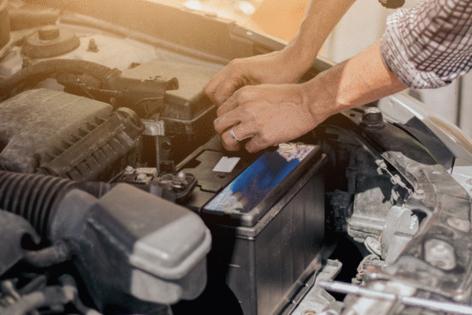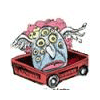Motormouth: Battery terminals
Published in Business News
Q: I'm confused about applying dielectric grease to battery terminals. Since it is non-conductive I thought it should only be applied to the outside of the assembled terminal and clamp. Your recent answer doesn't make that clear.
E.S., Northbrook, Illinois
A: You are absolutely right. I should have made it clear that the grease (including white lithium grease) should be applied to the outside. Never put anything on the terminal itself or the inside of the cable clamp.
Q: Regarding the reader’s question about battery terminal corrosion, back in the day we used copper pennies. We would place one near the terminal and when they got corroded, we tossed them out and added new pennies. A cheaper solution.
S.K., Downers Grove, Illinois
A: The copper served as a sacrificial anode. But good luck finding copper pennies today except in somebody’s coin collection. The last ones were minted in 1982. Since then, the penny is made of zinc with a thin coating of copper. Soon, even these may disappear if the president gets his way and the U.S. stops minting them.
Q: I own a used 2015 Toyota Camry. While braking, the brake warning light will come on suddenly, and the brakes will activate harder than intended. It jerks the car. The braking will then be normal for a while, until it decides to do it again. The car always stops, but the initial jerk may cause skidding in slippery conditions. Also, the sudden instant braking causes the cars behind to slam on their brakes. This happens without any cars or objects in front of the car, so it may be a malfunctioning pre-collision system. The Toyota dealership has returned the car twice with a "fix," but it keeps happening. It does not happen 100% of the time; it can go days on end without happening, so the dealership returns the car thinking that it's fixed. It has been back at the dealer for 3 weeks now. Any ideas?
N.K., Elgin, Illinois
A: This is a symptom of a failing anti-lock brake system (ABS), usually the control module. The bad news is that the part may cost well over $1,000 -- even for a remanufactured unit.
Q: My daughter has a 2009 Elantra and about every two months the power steering wheel freezes up. She has to turn off the car and restart it to get the steering to work. It typically happens when she’s pulling away from the curb. The steering column has been replaced for $4,000 and yet the problem persists. Any suggestions? Two different repair shops suggested the new steering column.
J.T., Wheaton, Illinois
A: I have a hunch the electronic power steering (EPS) may be the problem. Of course, the fault may be anywhere in the system including the steering wheel sensor, the EPS motor, the wiring or more. I must bow to a professional technician for a complete diagnosis.
Q: We own a 2018 Audi Q7 and experience increasing amounts of brake noise. It used to happen only when backing out of the garage but now continues through the first several stops, we make while traveling. It’s VERY loud! The dealership says we should “jam on the brakes a few times” and it will stop. Not a very reliable fix. Is there any way to eliminate this neighborhood-wakening annoyance?
T.B., Grayslake, Illinois
A: Chances are moisture on the brake pads or surface rust on the brake rotors may be the cause. After a few miles, everything gets dry. If the problem occurred after a brake job, the technician may have put only one rattle clip on the brake pads. Two are needed. Forgetting to install both is common. Applying anti-squeal compound on the pads may also help.
©2025 Tribune Content Agency, LLC.












Comments